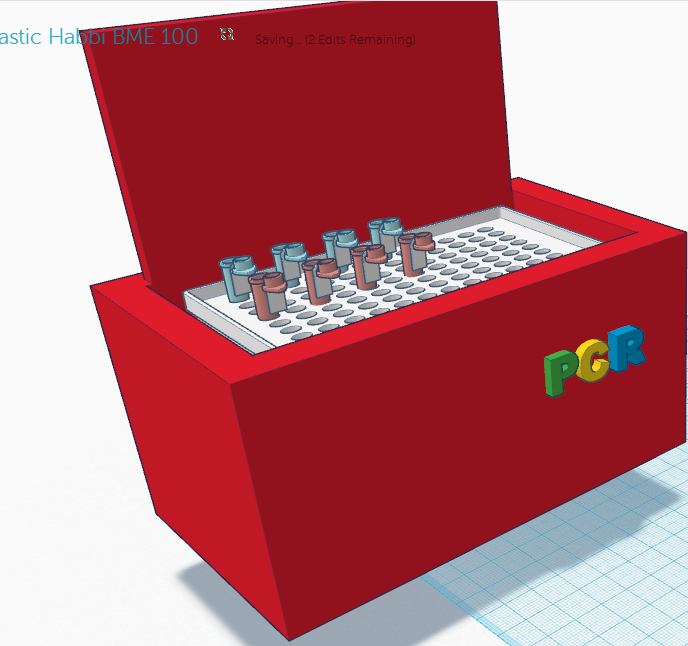BME100 f2013:W1200 Group3 L6
| Home People Lab Write-Up 1 | Lab Write-Up 2 | Lab Write-Up 3 Lab Write-Up 4 | Lab Write-Up 5 | Lab Write-Up 6 Course Logistics For Instructors Photos Wiki Editing Help | |
OUR COMPANY
LAB 6 WRITE-UPComputer-Aided DesignTinkerCAD
Implications of Using TinkerCAD for Design
Feature 1: Cancer SNP-Specific Primers[Instructions: This information will come from the Week 9 exercises you did in lab. Your notes should be in a pdf file that is saved on Blackboard under your group.] Background on the cancer-associated mutation [Instructions: Use the answers from questions 3, 4, 5, and 7 to compose, in your own words, a paragraph about rs17879961]
Primer design
How the primers work: [Instructions: explain what makes the primers cancer-sequence specific. In other words, explain why the primers will amplify DNA that contains the cancer-associated SNP rs17879961, and will not exponentially amplify DNA that has the non-cancer allele.]
Feature 2: Consumables Kit[Instructions: Summarize how the consumables will be packaged in your kit. You may add a schematic image. An image is OPTIONAL and will not get bonus points, but it will make your report look awesome and easy to score.] [Instructions: IF your consumables packaging plan addresses any major weakness discussed by your group or mentioned by others (see the Virtual Comment Board Powerpoint files on Blackboard, Lab Week 12) explain how in an additional paragraph.]
Feature 3: PCR Machine Hardware[Instructions: Summarize how you will include the PCR machine in your system. You may add a schematic image. An image is OPTIONAL and will not get bonus points, but it will make your report look really awesome and easy to score.] [Instructions: IF your group has decided to redesign the PCR machine to address any major weakness discussed by your group or mentioned by others (see the Virtual Comment Board Powerpoint files on Blackboard, Lab Week 12) explain how in an additional paragraph.]
Feature 4: Fluorimeter Hardware[Instructions: Summarize how you will include the fluorimeter in your system. You may add a schematic image. An image is OPTIONAL and will not get bonus points, but it will make your report look really REALLY awesome and easy to score.] [Instructions: IF your group has decided to redesign the fluorimeter to address any major weakness discussed by your group or mentioned by others (see the Virtual Comment Board Powerpoint files on Blackboard, Lab Week 12) explain how in an additional paragraph.]
Bonus Opportunity: What Bayesian Stats Imply About The BME100 Diagnostic Approach[Instructions: This section is OPTIONAL, and will get bonus points if answered thoroughly and correctly. Here is a chance to flex some intellectual muscle. In your own words, discuss what the results for calculations 3 and 4 imply about the reliability of CHEK2 PCR for predicting cancer. Please do NOT type the actual numerical values here. Just refer to them as being "less than one" or "very small." The instructors will ask you to submit your actual calculations via e-mail. We are doing so for the sake of academic integrity and to curb any temptation to cheat.] |
|







